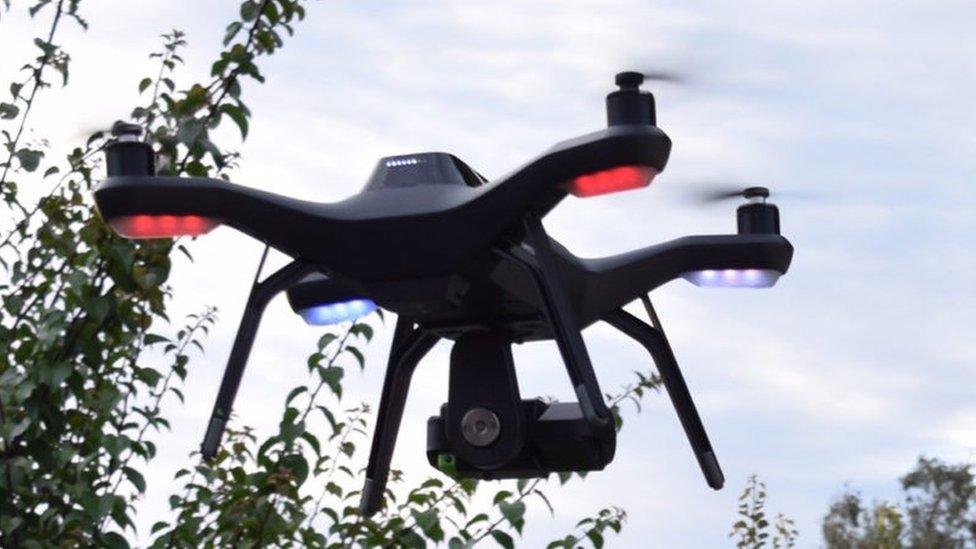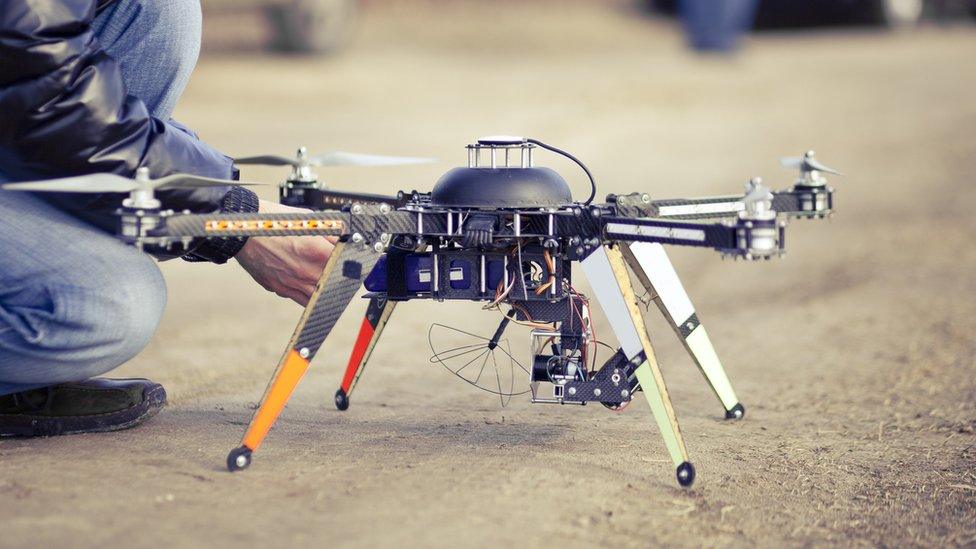Drone detects heartbeat and breathing rates
- Published

The drone could also be used to monitor patients in hospital
Researchers at the University of South Australia have developed drones that can remotely measure heart and breathing rates.
Image-processing systems combined with specially created algorithms allow the drones to detect vital signs in several people at once, while they are moving.
The drones could be deployed in nursing homes, on hospital wards and in war zones.
One expert said it could be "game-changing".
The system detects movements in human faces and necks in order to accurately source heart and breathing rates. In trials, the drones took measurements from a distance of three metres but could be advanced to take them from much further away.
"The drone will single out each person automatically and provide a trace for each individual as to where their heart rate and breathing rate is," said project supervisor Prof Javaan Chahl.
"A lot of environments are hostile so a drone is the safest option - places like the ocean require drones in order to gain access to people in trouble quickly and safely.
"There's also situations in clinical settings where you wouldn't really think it's worth having electrodes and instruments to monitor patients, but if you can just have a camera do it, you may be able to put instrumentation where you wouldn't normally put it."
Car accidents
The research grew out of a desire to find a non-contact sensor to replace electrodes that were used in developing countries to detect vital signs in newborn babies and could lead to infections.
Ravi Vaidyanathan, robotics lecturer at Imperial College London, said it was a "fascinating" use of drones.
"It seems to be a clever application of technology that is already around and is something that will be very welcome in remote places where there is a need for information on health. If a drone can do it without contact, that is potentially game-changing.
"Obviously further testing in a range of environments is needed but there are a lot of long-term uses for it, such as in a car accident to monitor vital signs while the ambulance is on its way."
The team has yet to have commercial interest, but Prof Chahl said it would only take "one good conversation with an industry partner who has an idea and we could be seeing this come to life in months."
- Published26 September 2017

- Published3 August 2017
